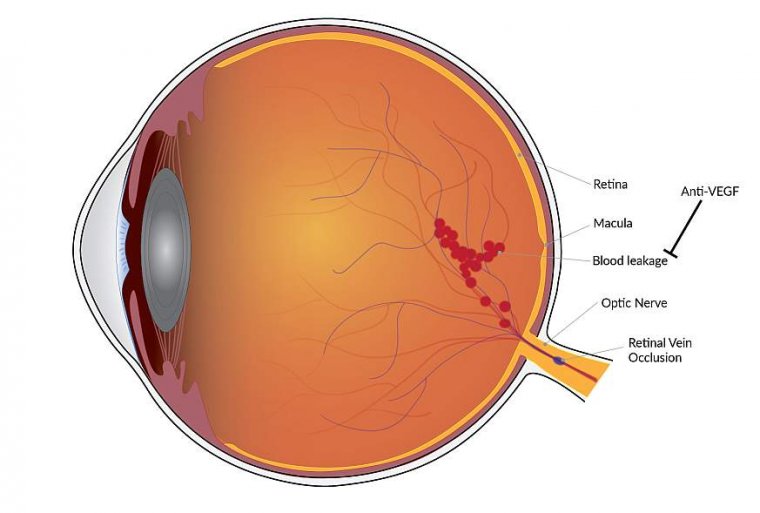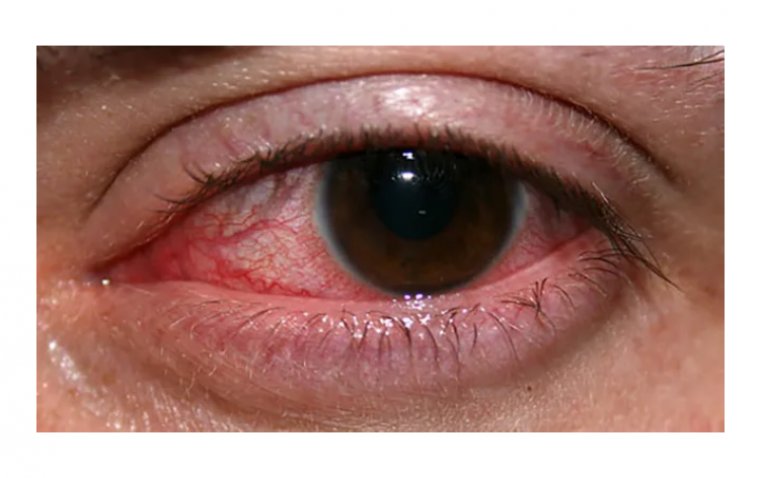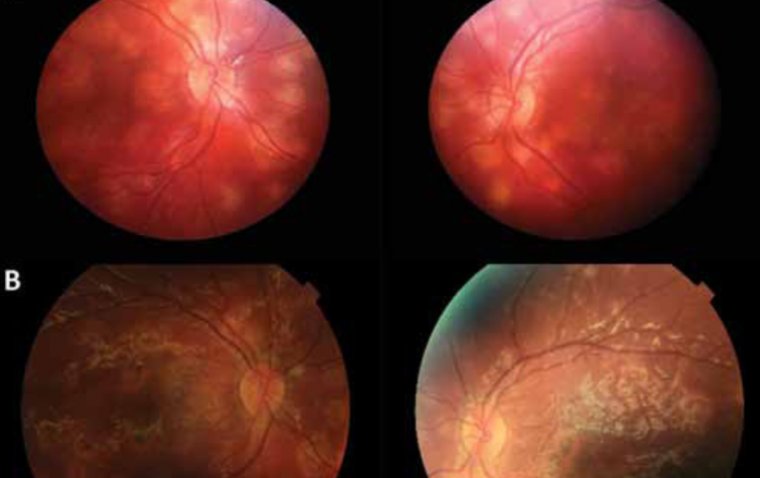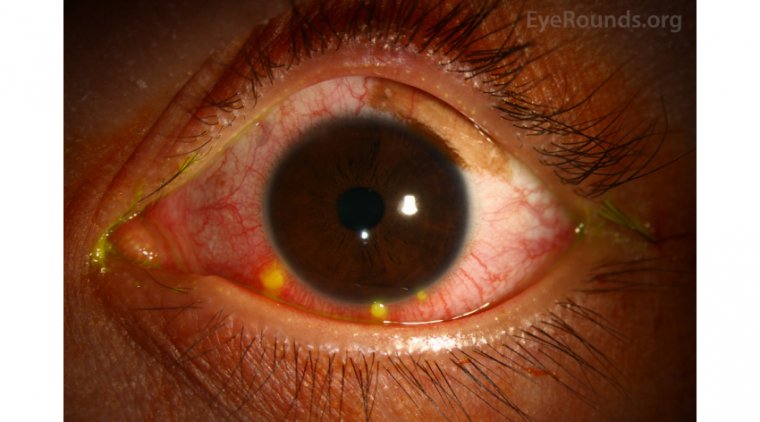
What is Chlamydia Eye Infection and How Can You Recognize It
What is Chlamydia Eye Infection?
Chlamydia eye infection, caused by the bacterium Chlamydia trachomatis, is an infectious condition affecting the eye's conjunctival membranes. This infection can manifest in various forms, most notably as inclusion conjunctivitis and trachoma, each resulting from different strains of the same bacterium.
Types of Chlamydia Eye Infection
1. Inclusion Conjunctivitis
● Primarily affects sexually active adults.
● Often associated with genital chlamydial infections.
● Symptoms may include redness, irritation, and discharge from the eyes.
● Transmission can occur through direct contact with infected genital secretions or by touching the eyes with contaminated hands.
2. Trachoma
● More prevalent in children and in communities with poor sanitation.
● Caused by repeated infections leading to chronic conjunctivitis.
● Can result in scarring of the eyelid, in-turned eyelashes (trichiasis), and ultimately, blindness if untreated.
● Spread through direct contact with eye or nasal secretions of infected individuals or indirectly through contaminated objects.
Causes of Chlamydia Eye Infection
Chlamydia eye infection, a concerning ocular condition, arises from the bacterium Chlamydia trachomatis. Understanding its transmission dynamics and identifying risk factors are essential in preventing its spread and ensuring timely treatment.
The infection spreads primarily through direct or indirect contact with infectious secretions. There are several pathways for this transmission, each contributing to the spread of the bacterium in distinct populations:
1. Direct Contact with Genital Secretions: One of the most common routes of transmission, especially for inclusion conjunctivitis, is the transfer of secretions from the genitals to the eyes. This transfer often occurs via hands that have come into contact with infected genital fluids.
2. Sexual Transmission: Sexual contact with an infected partner can lead to genital chlamydial infections, which can subsequently spread to the eyes if proper hygiene practices are not followed. This route underscores the interconnectedness of sexual health and ocular health.
3. Mother to Newborn Transmission: During childbirth, infants can contract chlamydial infections from their mothers, leading to conjunctivitis in the first few weeks of life. This form of transmission highlights the importance of screening and treating pregnant women for chlamydial infections to prevent neonatal conjunctivitis.
4. Contaminated Objects: Sharing personal items like towels, cosmetics, or eye drops that have been contaminated with infected secretions can facilitate the spread of chlamydia to the eye, underscoring the need for personal hygiene.
Risk Factors for Chlamydial Conjunctivitis
Certain behaviours and environmental conditions significantly increase the likelihood of developing chlamydial conjunctivitis:
● Unsafe Sexual Practices: Individuals engaging in unprotected sex or having multiple sexual partners are at a higher risk. These practices facilitate the spread of sexually transmitted infections, including chlamydia, which can affect the eyes.
● Poor Personal Hygiene: Inadequate handwashing and facial hygiene can easily allow the transfer of bacteria from hands to eyes, especially in environments where chlamydia is prevalent.
● Exposure in Endemic Areas: Living in or traveling to areas where trachoma is endemic increases the risk of exposure to the strains of Chlamydia trachomatis responsible for this severe form of conjunctivitis.
● Crowded Living Conditions: Overcrowded living conditions and poor sanitation facilities contribute to the spread of infectious diseases, including trachoma, highlighting the role of social determinants in disease transmission.
● Lack of Access to Healthcare: Limited access to routine healthcare and sexual health services can result in undiagnosed and untreated chlamydial infections, increasing the risk of spread to the eyes and among sexual partners.
Symptoms of Chlamydia Eye Infection
1. Redness and Swelling
The most noticeable symptom of a chlamydia eye infection is the pronounced redness of the conjunctiva, the mucous membrane covering the front of the eye and lining the inside of the eyelids. This redness is a direct result of inflammation caused by the infection.
Accompanying the redness, swelling of the conjunctiva (chemosis) and the eyelids may occur, often resulting in a puffy appearance. This swelling can cause discomfort and, in severe cases, may partially obstruct vision by limiting eyelid movement.
2. Watery Discharge
Infected individuals commonly experience a watery discharge from the eyes. This discharge can vary from clear to slightly cloudy and may accumulate at the corners of the eyes or coat the lashes, especially after sleeping.
The presence of this discharge is a key indicator of infection, distinguishing it from the typical dryness or "sleep" in the eyes upon waking.
3. Photophobia
Photophobia, or sensitivity to light, is a potential symptom that can cause discomfort in bright environments or when exposed to direct sunlight. This sensitivity is indicative of the inflammation affecting deeper parts of the eye beyond the conjunctiva, potentially involving the cornea.
4. Swollen Eyelids
The eyelids may become swollen and tender to the touch, contributing to the overall discomfort and irritation experienced by the patient. This swelling can exacerbate the sensation of grittiness or foreign body in the eye.
5. Irritation
A pervasive sense of irritation, often described as a gritty or sandy feeling in the eye, is frequently reported. This sensation is due to the inflamed conjunctiva and can be aggravated by blinking or rubbing the eyes.
6. Additional Symptoms
In more advanced cases, symptoms may extend to include blurred vision, especially if the cornea becomes involved due to prolonged infection or severe inflammation.
Itching may also be present, leading to an irresistible urge to rub the eyes, which can further spread the infection or aggravate the condition.

Diagnosing Chlamydia Eye Infection
1. Clinical Evaluation
Detailed Patient History: The initial step involves gathering a detailed patient history, focusing on symptoms, onset duration, and any potential exposure to risk factors, including sexual history or contact with individuals known to have chlamydial infections.
Physical Examination: A thorough physical examination of the eyes is conducted. This includes assessing the conjunctiva for redness, swelling, and discharge. Special attention is given to the eyelids, cornea, and overall eye appearance to note any signs indicative of chlamydial conjunctivitis or trachoma.
Symptom Assessment: The healthcare provider evaluates the severity and extent of symptoms such as photophobia, irritation, and watery discharge, as these clinical manifestations guide the diagnostic and treatment process.
2. Laboratory Testing
To confirm the diagnosis of Chlamydia eye infection, laboratory tests are employed to detect the presence of Chlamydia trachomatis:
Swab Samples: A swab sample is taken from the conjunctiva, the inner surface of the eyelids, or the corneal surface. This sample is then analyzed using specific assays designed to detect chlamydial DNA or antigens.
Polymerase Chain Reaction (PCR) Testing: PCR testing is a highly sensitive and specific method used to identify chlamydial DNA in the sample. Its high accuracy makes it a valuable tool in confirming the diagnosis, especially in cases where symptoms are mild or non-specific.
Culture: Although less commonly used due to the availability of faster and more sensitive tests, culturing the bacteria from conjunctival swabs can also provide a definitive diagnosis. This method involves growing the bacteria in a controlled laboratory environment, which can then be identified under a microscope.
3. Additional Diagnostic Considerations
In some cases, additional tests may be conducted to rule out other causes of conjunctivitis or eye infections, including other bacterial infections, viral conjunctivitis, or allergic reactions. This differential diagnosis is crucial for ensuring that the treatment plan is appropriately targeted to the cause of the infection.
Assessment of the patient’s overall health and any signs of concurrent genital chlamydial infection may also be warranted, given the association between ocular and genital chlamydial infections. This can involve a referral for further examination and testing by a relevant healthcare provider.
Treatment Options for Chlamydia Eye Infections
1. Antibiotic Treatment
● Primary Antibiotics: Azithromycin (single dose) and doxycycline (one to two weeks) are the mainstays for treating Chlamydia eye infections.
● Alternatives: Erythromycin or ofloxacin may be used for patients with specific needs, such as allergies, pregnancy, or pediatric cases.
● Administration: Treatment typically involves oral antibiotics to address the systemic infection, with topical antibiotics as adjunct therapy for direct ocular symptom relief.
2. Completing Treatment
● Adherence: Patients must complete the entire antibiotic course to fully eradicate the infection, even if symptoms improve early.
● Follow-Up: Regular follow-up is essential to ensure treatment efficacy, manage any side effects, and confirm infection resolution.
3. Patient Education and Prevention
● Informing Patients: Educating patients about their condition, treatment importance, and preventive measures is crucial for managing and preventing reinfection.
● Safe Practices: Advice on safe sexual practices and hygiene is provided to minimize the risk of recurrence and spread.
How to Prevent Chlamydia Eye Infections
1. Safe Sexual Practices
Key Strategy: Encourage the use of condoms and safe sexual behaviors to reduce the risk of sexually transmitted Chlamydia, which can lead to eye infections.
2. Personal Hygiene
Handwashing: Regular and thorough handwashing is emphasized to prevent the transfer of Chlamydia bacteria from hands to eyes.
Avoiding Contaminated Objects: Advise against sharing personal items like towels and cosmetics that could be contaminated with infectious secretions.
Complications and Long-Term Effects
Untreated Infections
● Potential Complications: Left untreated, Chlamydia eye infections can lead to serious ocular complications, such as corneal damage, scarring, and even blindness in severe cases. These outcomes underscore the critical importance of early detection and treatment.
● Progression Risks: The risk of complications increases with prolonged infection duration, making timely medical intervention essential.
Impact on Vision
● Vision Loss: Chronic infections, especially those not adequately treated, can result in irreversible damage to the eye, affecting vision clarity and potentially leading to partial or complete vision loss.
● Quality of Life: The impact on vision can significantly affect an individual's quality of life, hindering daily activities, employment, and social interactions.
When to Seek Medical Consultation
Timely Consultation
● Immediate Action: It's crucial to seek professional healthcare advice at the first sign of symptoms related to Chlamydia eye infections to ensure accurate diagnosis and effective treatment.
● Avoiding Delays: Prompt medical consultation helps prevent the progression of the infection and reduces the risk of complications.
Follow-Up Care
● Importance of Monitoring: Scheduled follow-up appointments are essential for monitoring treatment progress, ensuring the infection has been fully resolved, and addressing any emerging concerns.
● Ensuring Recovery: Regular check-ups support complete recovery and help in the early detection of any potential recurrence of the infection.
Summary
Chlamydia eye infection, resulting from the Chlamydia trachomatis bacterium, underscores the intricate link between public health practices, personal hygiene, and the importance of sexual health awareness. This condition, manifesting primarily as inclusion conjunctivitis or trachoma, presents a significant health challenge that, if left untreated, can lead to severe complications, including vision impairment or blindness.
Awareness and education play pivotal roles in preventing Chlamydia eye infections. Knowledge of transmission methods, symptom recognition, and the importance of safe sexual practices can greatly reduce the incidence of this condition. Personal hygiene, particularly regular handwashing and avoiding the sharing of personal items, further mitigates the risk of infection.
The treatment of Chlamydia eye infections with appropriate antibiotics is highly effective, emphasizing the necessity of medical consultation upon symptom onset. Adherence to prescribed treatment regimens and follow-up care are crucial to ensure complete recovery and prevent recurrence.
Preventive measures, including the promotion of safe sexual behaviours and hygiene practices, are essential strategies in combating the spread of Chlamydia eye infections. Such measures not only protect individuals but also have broader implications for public health, contributing to the reduction of infection rates and the prevention of long-term ocular complications.
References:
https://pmc.ncbi.nlm.nih.gov/articles/PMC5381307/
https://www.medicalnewstoday.com/articles/chlamydial-conjunctivitis
(1).jpg)









